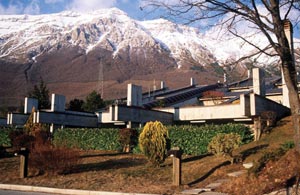
European astroparticle physics received a boost last year with the formation of the Astroparticle Physics European Coordination (APPEC), established in an agreement signed by funding agencies from France, Germany, Italy, the Netherlands and the UK. Astroparticle physics – which covers topics as diverse as cosmic rays, dark matter and gravitational radiation – falls between more traditional areas such as particle physics, nuclear physics and astronomy, and so can lose funding opportunities. Also, different countries have different ways of defining astroparticle physics. APPEC has been set up to promote co-operation within Europe’s growing astroparticle physics community, and to develop long-term strategies at the European level, in particular for funding.
APPEC’s activities are organized through two main committees: a steering committee, currently led by Jean-Jacques Aubert of the French CNRS; and a peer-review committee, chaired by Ricardo Barbieri of the Scuola Normale Superior in Pisa. The steering committee, which meets twice a year and includes representatives from the initial partners, has already met in Berlin and London. One important action has been to begin work on a bid to the EU 6th Framework for up to 720 million for an Integrated Initiative Infrastructure (I3). The committee also seeks to widen APPEC’s membership – Spain, for example, is joining, and other countries have been approached.
The peer-review committee, which also meets twice a year, aims to assess existing programmes in different areas of astroparticle physics, and to encourage future collaboration. The committee has already met twice, to review experiments in double beta decay and in dark matter. Its next meeting, in January 2003, will consider high-energy neutrino experiments.
David Wark from Sussex and RAL, who is one of the members of the steering committee, said: “I believe this is a positive step for astroparticle physics, as it can help bring some of the rigour, co-operation and international clout to astroparticle physics that organizations like CERN and DESY bring to accelerator physics. It will also help to get astroparticle physics projects judged using similar criteria in all the countries from which they require support.”
Aside from its committee meetings, APPEC will keep in touch with European astroparticle physicists throughout the year with an electronic newsletter and a website, to be launched later this year. In the meantime, to register interest in receiving the newsletter, please email sacquin@dapnia.cea.fr.





